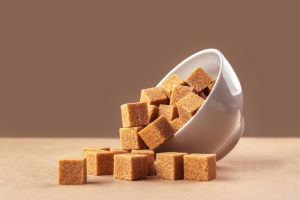We've all seen those perfectly round, pastel-colored macarons in bakeries or online, looking so delicate and irresistible. But let's be real—when it comes to making them ourselves, they often end up flat, cracked, or worse—totally unrecognizable! Why are macarons so tricky to master?
If you've ever attempted to make macarons and found yourself frustrated with the results, don't worry; you're not alone. Making macarons is more of an art than a simple baking recipe.
In this article, we'll dive into why macarons are so difficult to make and discuss some of the common mistakes that lead to failure. Don't give up on your macaron dreams just yet—we've got you covered with some tips to improve your baking game!
What Makes Macarons So Challenging?
At first glance, macarons seem simple enough. After all, it's just a combination of egg whites, sugar, almond flour, and a bit of food coloring, right? However, it's not the ingredients that are the problem—it's the technique. Macarons require a delicate balance of precision, patience, and timing. The batter needs to be perfectly smooth, the macaron shells need to form that signature "foot" at the bottom, and the baking time has to be just right to avoid over or undercooking.
One of the main challenges with macarons is their sensitivity to even the smallest changes in conditions, whether it's humidity, temperature, or even the way you fold the batter. Even the slightest mistake can result in a less-than-perfect macaron. So, let's take a closer look at the most common reasons why macarons fail.
Reason 1: Incorrect Meringue
One of the key elements of a successful macaron is the meringue—egg whites that are whipped into stiff peaks. The texture and stiffness of the meringue play a huge role in determining how the macaron will turn out. If the meringue isn't whipped enough, the shells will not have the necessary structure to hold their shape. On the other hand, if the meringue is over-whipped, it can become too stiff and dry, causing the macarons to split during baking.
To get the perfect meringue, we need to make sure the egg whites are at room temperature before whipping. If you're using a stand mixer, start on a low speed and gradually increase it to medium-high as the egg whites start to form. Look for stiff peaks that stand straight up when you pull out the whisk.
Reason 2: Overmixing or Undermixing the Batter
Once we've got the meringue, the next big hurdle is folding it into the almond flour and powdered sugar mixture. This is where many bakers go wrong. If the batter is overmixed, the macarons will spread too much and become thin and flat. On the flip side, if the batter is undermixed, the macarons may not spread enough and will result in dense, unappealing cookies.
The key to folding the batter is to do it gently, but consistently. You should aim for the batter to be smooth and flow like lava, not too thick or runny. A good test is to lift a little batter with a spatula and see if it falls back into the bowl slowly, creating a ribbon-like effect. If it's too thick, fold a little longer. If it's too thin, stop folding immediately.
Reason 3: Incorrect Oven Temperature
Macarons are very sensitive to temperature, and baking them at the wrong temperature can lead to disaster. If the oven is too hot, the shells will puff up too quickly, leading to cracked tops and undercooked centers. If the oven is too cool, the macarons will not rise properly and will remain flat.
To avoid this, it's essential to use an oven thermometer to check the temperature, as most ovens can be off by a few degrees. The ideal temperature for baking macarons is around 300°F (150°C). If you're using a fan-assisted oven, you may need to lower the temperature slightly. And don't forget to rotate your baking tray halfway through to ensure even cooking!
Reason 4: Humidity Issues
Macarons are particularly sensitive to humidity. High humidity can cause the macaron shells to become soft and sticky, while low humidity can make them dry out and split. This is why macarons are often considered a "weather-dependent" bake. If you're in a humid environment, try to bake on a dry day, or consider using a dehumidifier in your kitchen.
If you absolutely must bake on a humid day, there are a few tricks you can use, such as letting the piped macarons sit out for longer to form a skin before baking. This helps prevent the shells from absorbing moisture during baking.
Reason 5: Poor Piping Technique
Another challenge with macarons is getting the perfect shape. If the batter is piped unevenly or too close together, the macarons will merge during baking and won't form that beautiful round shape we all love. On the other hand, if the batter is piped too far apart, the macarons will bake unevenly.
To get uniform, round macarons, make sure to use a piping bag with a round tip (preferably around 1/2 inch wide) and pipe the batter into uniform circles. Also, make sure to hold the piping bag straight up while piping, and avoid moving it side to side.
Conclusion: Don't Give Up, Keep Practicing!
Making macarons may seem like a daunting task, but with practice, patience, and a little trial and error, we can all master the art of these delicious little treats. By paying attention to the details—like whipping the meringue correctly, avoiding overmixing the batter, and getting the oven temperature just right—you'll be on your way to creating perfect macarons in no time.
Remember, even professional bakers experience failures with macarons, so don't be discouraged if they don't turn out perfect on your first try. With each batch, we learn something new. Keep practicing, and you'll be rewarded with those irresistible, delicate macarons that are worth every effort.
We'd love to hear about your macaron experiences! Have you faced any of these challenges before? Share your thoughts or questions in the comments below—we're always here to help!


